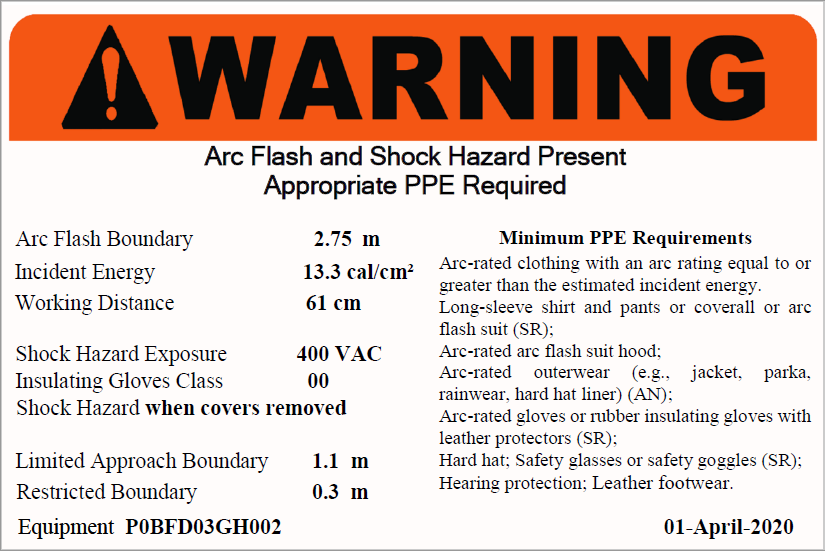In November 2024, the Occupational Safety and Health Administration (OSHA) issued new arc flash safety guidelines to provide better protection for electrical system operators in commercial, industrial, and residential settings from arc flash and electrical shocks hazards. This new guidance focuses on an important topic to improve awareness, knowledge and practical solutions to protect electrical…
Category Archives: News
Working distance is one of the important parameters of incident energy calculation in arc flash analysis along with fault clearing time of overcurrent protective devices and equipment constructions. Working distance is defined as the distance between a person’s face and chest area and a prospective arc source. Incident energy shall be calculated at specific working…
Arc Flash Label is one of important method that NFPA 70E standard defines in Hierarchy of Risk Controls to awareness controls by warning labels, signs and alarms to warn workers about electrical hazards. Electrical equipment such as switchboards, panelboards, industrial control panels, meter socket enclosures and motor control centers to require examination, adjustment, servicing, or…
NFPA 70E Standard defines two main protection boundaries for personnel to observe , including: – The arc flash protection boundaries – The shock protection boundaries identified as limited approach boundary and restricted approach boundary. ♦ Limited approach boundary The limited approach boundary is defined as the distance from an exposed energized electrical conductor or…
NFPA 70E Standard defines two methods for the selection of arc flash PPE, including: The incident energy analysis method and The arc flash PPE category method. But NOT both on the same piece of equipment. the result of an incident energy analysis method to specify an arc flash PPE category method shall not be permitted….





